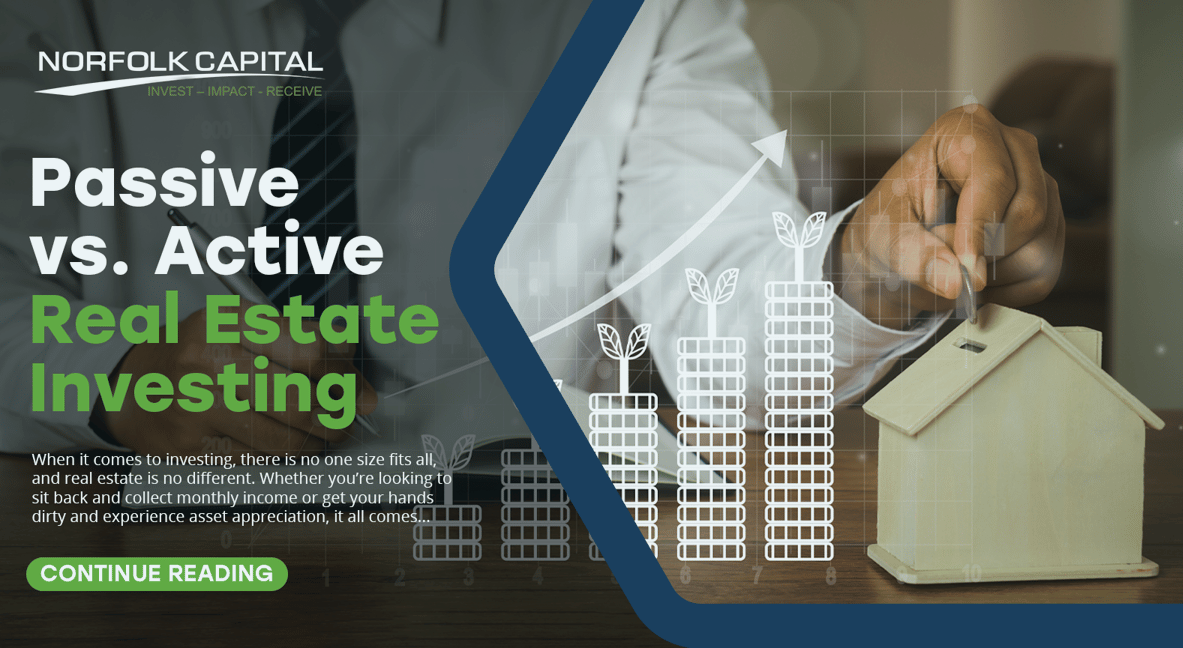
Passive vs. Active Real Estate Investing
When it comes to investing, there is no one size fits all, and real estate is no different. Whether you’re looking to sit back and collect monthly income or get your hands dirty and experience asset appreciation, it all comes down to the strategy you use — passive or active real estate investing.
Knowing the difference between these two approaches can make the difference between achieving the desired results or becoming frustrated. Everyone has heard of house flipping. But are you prepared to put in the time and manual labor that’s required to make the investment profitable? If not, you could be in for a rude awakening.
Let’s dive into what sets passive real estate investing apart from active real estate investing.
Passive Real Estate Investing
If you are looking for all the perks of real estate investing but aren’t interested in putting in the blood, sweat, and tears needed to maintain the property, you might want to consider passive real estate investing. Passive real estate investing is a way to generate steady income and experience the benefits of asset appreciation without the labor.
There are several ways to do this, such as through real estate investment trusts (REITs), remote ownership, or other real estate investment funds. By choosing any of these options, you’ll gain exposure to the real estate market and potentially generate regular income without having to lift a finger — except to write the check.
You won’t have to renovate, make fixes on the property, or serve as the landlord and therefore have to collect rents. Instead, you are putting the portfolio manager to work for you while generating income like clockwork.
If you choose to invest in a REIT or other real estate investment fund, think of it like a mutual fund. You won’t have to cherry pick the properties yourself, so to speak, and instead the professional portfolio managers (or algorithms) will do the heavy lifting for you. As a result, you are earning cash flow from the investment without ever having to purchase the property yourself.
Chief among the benefits of REIT investing, in particular, are better performance and less volatility that you’d experience in the stock market. According to a recent article in The Motley Fool, REITs have done better than stocks over 20-year and 50-year time horizons and the full-year 2021. In addition, REITs tend to experience less extreme price swings than the S&P 500. And they’re more liquid.
If you are an LP in a real estate fund, you will get more bang for your buck. Investors’ funds are pooled together with that of other LPs so the manager can deploy the capital more efficiently across any number of select development projects. In addition, LPs are entitled to profits from passive real estate investing before anyone else, even the General Partners.
Active Real Estate Investing
On the flip side, active real estate investing commands the time, capital, and expertise of the investor. It also exposes the investor to a greater amount of risk considering that they must be involved from start to finish in the project. If you are willing to make real estate investing your 9-5, then this model could work for you.
Perhaps the most widely known type of active real estate investing is flipping. In addition to investing capital, the active real estate investor is investing a great deal of their time (first and foremost to find the property to flip), expertise, and oftentimes labor.
The investor finds a listed property that is in need of repair and buys it on the cheap (so they can earn a profit later). They then make the necessary repairs and do the renovations themselves or rely on a partner to handle this side of things. The idea is to make the fixes as quickly as possible so that the investor can turn the property around and sell it for a profit.
Another type of active real estate investing is wholesaling. In this case, the investor commits to a property via a purchase and sale agreement but never actually goes through with the deal. Instead, the investor sells the rights to the real estate to another buyer before the transaction closes, earning a fee in the process.
There are other types of active real estate investing as well, all of which require a high level of expertise in the industry in order to be successful. Whether you prefer passive or active investing, the real estate market offers no shortage of opportunities.
